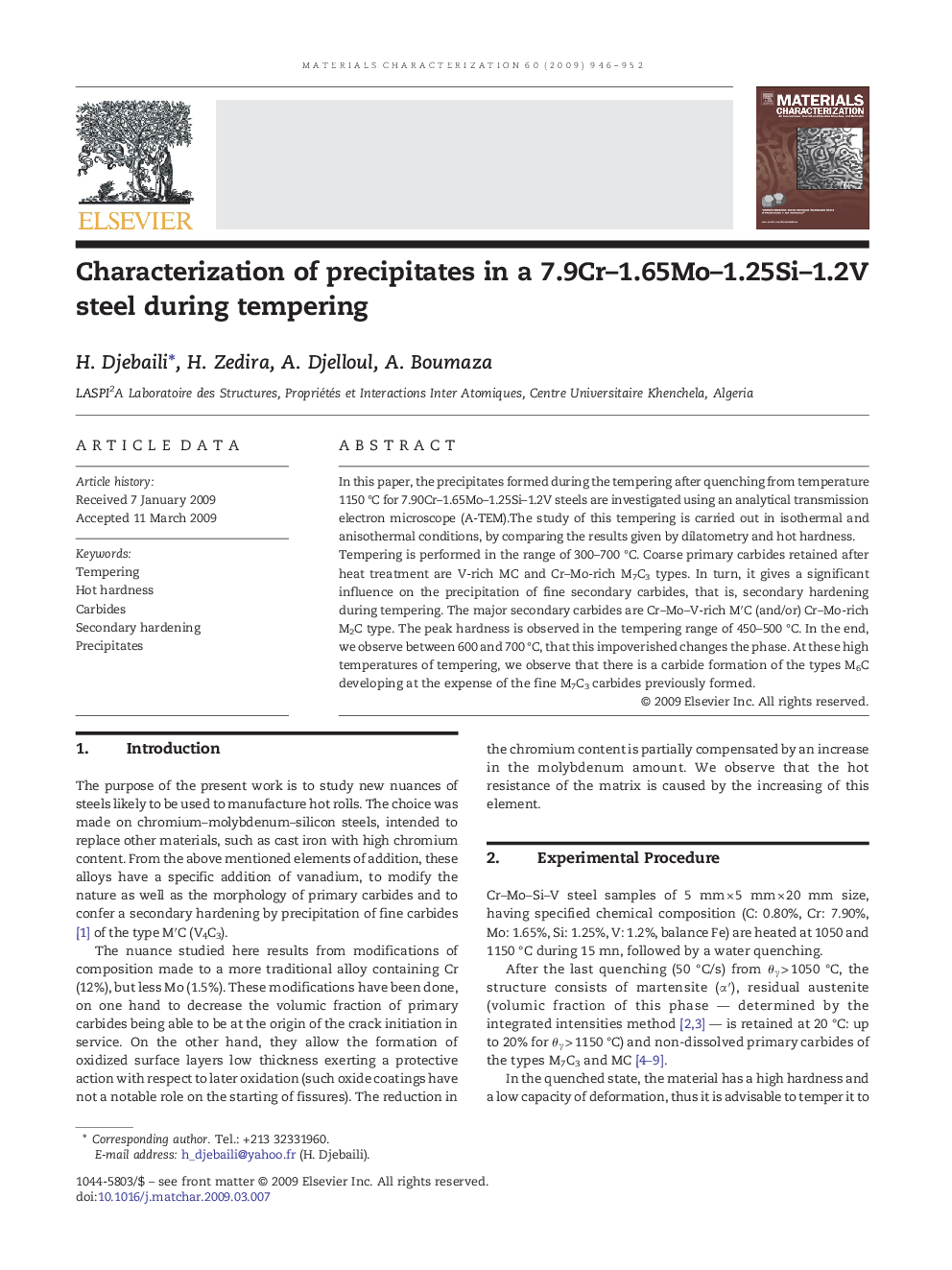| Article ID | Journal | Published Year | Pages | File Type |
|---|---|---|---|---|
| 1572030 | Materials Characterization | 2009 | 7 Pages |
In this paper, the precipitates formed during the tempering after quenching from temperature 1150 °C for 7.90Cr–1.65Mo–1.25Si–1.2V steels are investigated using an analytical transmission electron microscope (A-TEM).The study of this tempering is carried out in isothermal and anisothermal conditions, by comparing the results given by dilatometry and hot hardness.Tempering is performed in the range of 300–700 °C. Coarse primary carbides retained after heat treatment are V-rich MC and Cr–Mo-rich M7C3 types. In turn, it gives a significant influence on the precipitation of fine secondary carbides, that is, secondary hardening during tempering. The major secondary carbides are Cr–Mo–V-rich M′C (and/or) Cr–Mo-rich M2C type. The peak hardness is observed in the tempering range of 450–500 °C. In the end, we observe between 600 and 700 °C, that this impoverished changes the phase. At these high temperatures of tempering, we observe that there is a carbide formation of the types M6C developing at the expense of the fine M7C3 carbides previously formed.
